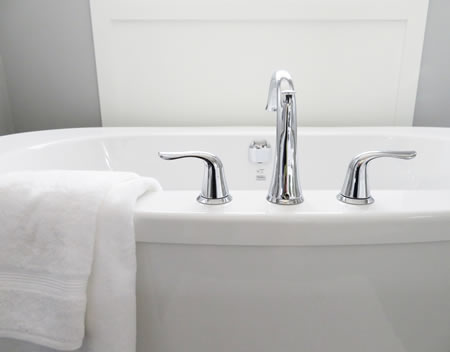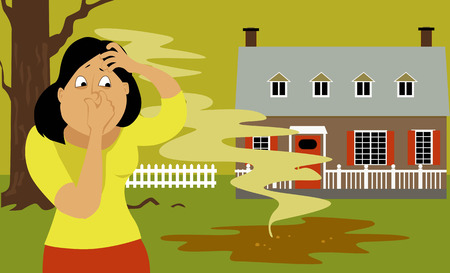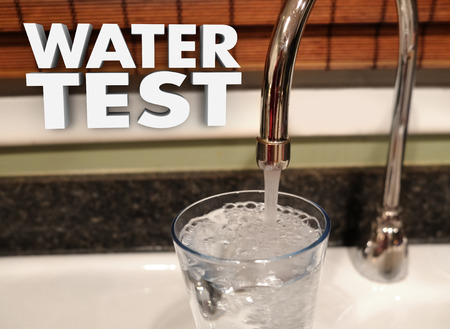Hard Water vs. Soft Water

Boise is an inherently hard water area due to the natural ground conditions, but many people aren’t exactly sure what that means or what they should do about it. In general, water that is considered “hard” has a high amount of calcium, magnesium and iron in it. Hard water is the most natural form of water as it has not undergone any chemical processing. Hard water is filtered through stones and mineral deposits as it seeps through the ground. Soft water has been treated to remove these items and sodium has been added.
So which is better for your home – hard or soft? There are pros and cons to both sides making this more of an individual decision but here are a few items to consider. Hard water can leave a film or spots on dishes and bathtubs while also causing more damage to household appliances. The primary detriment to hard water is the deposits, or “scales” it leaves behind which can cause plumbing problems such as clogging pipes. Hard water can also have a slightly bitter taste which some people aren’t a fan of. One final potential downside to hard water is the effect it has on hair and skin. It tends to make hair look dull or feel sticky and can cause hair breakage or a flaky scalp. In the case of children there have been studies showing a link between hard water and increased cases of eczema.
All of that being said there are some distinct advantages to hard water as well. By drinking water that still contains all of its natural minerals research has shown that the body does better in fighting and preventing cardiovascular diseases and certain types of heart disease. Hard water also helps individuals receive the recommended dose of minerals, while soft water will give people too much sodium. Soft water also tends to more easily pick-up elements such as lead while traveling through pipes. This can of course be bad for human consumption.
One suggestion for finding a middle ground is to consider installing a by-pass valve system. This would allow hard water to flow to certain areas of the home and soft water to others.
Another option is a filtration system to remove unwanted sodium from soft water while retaining the benefits to the home. While scientists may say that hard water is best most homeowners prefer soft but the choice will certainly vary house to house.
How to Fix a Leaking Bathtub Faucet

A leaking bathtub faucet is one of those jobs that often gets put off as long as possible. To most homeowners it looks intimidating. Many people aren’t sure if they have to replace the whole faucet or if the existing one can be repaired. Truthfully most people aren’t sure how to get inside of it to even start to figure out the problem, but it doesn’t have to be a scary home repair. It’s actually something many people are able to do themselves. It does require the purchase of some special tools but in the long run the cost savings on the water bill will cover the cost of the tools, not to mention it avoids dirty looking stains that can develop on the bottom of the bathtub.
Here’s a plan to help get this project started, this information is applicable to stem-type valves which are the most common for older two-handle style faucets (one handle for hot and one for cold water). First make a call on repairing vs. replacing. If the valve is extremely corroded or the finish is wearing off it’s recommended that the entire unit be replaced, otherwise repairing is probably just fine. If repairing is the plan, then it’s recommended that the old parts be taken to the hardware store to ensure that the correct new parts are purchased. There are so many different faucets that it can be difficult to make sure the correct replacements are being purchased without the original in-hand.
In order to remove the faucet first turn off the water supply to the tub. This can be done either with a valve under the sink or by turning off the main water supply to the house depending on the set-up of the home. After the water is turned off turn the handles in the tub to drain any water from the lines. In order to repair the faucet, the first step is to remove the handles. This is done by using a pocket knife to pop off the handle inserts (plastic covers that indicate hot or cold), then take out the screws that are underneath. After those are removed it will be possible to disconnect the handles from the stems. If the handles or handle inserts won’t come off, try using a tool called a “handle puller”. If this doesn’t work contact All Star Plumbing as any further action could result in significant damage to the faucet.
Generally, the leak is being caused by a bad washer so at this point use a screwdriver to remove the seat washer screws from the stems and remove the old washer. Replace both the washer and the washer screws with new ones. Apply some liquid thread sealant to the stem’s threads prior to putting them back into the faucet openings. Now its time to reassemble everything, turn the water back on, and test out the repair. While the washer failing is the most likely cause of a leak it’s certainly not the only one, so should there still be a leak after replacing the washer it’s recommended that a professional plumber be contacted as the problem may be far more complicated. However, for most people after the washer is replaced it’s smooth sailing.
Septic System Maintenance

There are some easy steps homeowners can take to extend the life of their septic system, reduce their long term maintenance costs, and avoid costly property damage or ground water pollution.
- Get the septic system inspected regularly – it’s generally recommended that a household septic system be inspected at least every two years by a professional. This person will check for leaks and examine the scum and sludge layers in the septic tank. This inspection can head off a potentially major problem, such as an overflow into the drain field, which can cause substantial damage.
- Get the septic system pumped out on schedule – there are several factors that affect the frequency of pumping such as the size of the septic tank, the size of the household, and the quantity of solids in the wastewater but in general a septic system will need to be pumped out every 3-5 years. This is also something the inspector can help to clarify during their visit.
- Keep good records – it’s important to have accurate records of when pumping and inspections were completed for future homeowners. In addition, a diagram of the system’s location and any other maintenance information should be kept on-hand.
- Limit water usage – the less wastewater produced the less stress put in the septic system. Address any water leaks immediately, use high-efficiency toilets, and make sure the washing machine and dishwasher are full before you run them.
- Don’t put the wrong things into your septic tank – there are certain items that should never be flushed down your toilet or put down the drains because of the damage they can cause to your septic system. Items such as flushable wipes, cooking grease, paper towels, cat litter, household chemicals, coffee grounds, egg shells, cigarettes, etc. are a no go. Be smart about what goes into your system.
- Only put grass on top of your drain field – don’t allow vehicles or livestock to travel over your drain field as this will compact the soil and reduce the effectiveness of the system. In addition, be sure not to pour concrete or asphalt over top of the drain field either.
- Don’t use septic tank additives on a regular basis – these items can be used on occasion but long-term they will create problems, and if used continuously they will not reduce the need for pumping.
The experts at All-Star Plumbing and Restoration can provide septic system assistance or help with installation of a new septic system as needed. Following these tips will help ensure the longevity of your septic system and prevent any stinky problems from arising.
Testing Your Water

Are you curious now whether your water is hard or soft? Here’s an easy experiment you can do to help you figure it out.
Supplies:
2 plastic bottles
Tap Water
Distilled Water
Dish soap
Fill both water bottles about half way with water. One should use tap water and the other distilled. Then add a small amount of dish soap to both bottles and shake them up. The distilled water will work as your base for comparison. If your tap water bottle creates the same amount of bubbles in it as the distilled water than you have soft water, if the tap water bottle has fewer bubbles then the distilled water then it’s considered hard. Hard water will not lather as well as soft water. If you find the lather the same between the two and you’re looking for a point of comparison add Epsom salt to one bottle. This will create hard water and you can run the experiment again to compare with a known hard water supply.
Past Plumbing Newsletters





